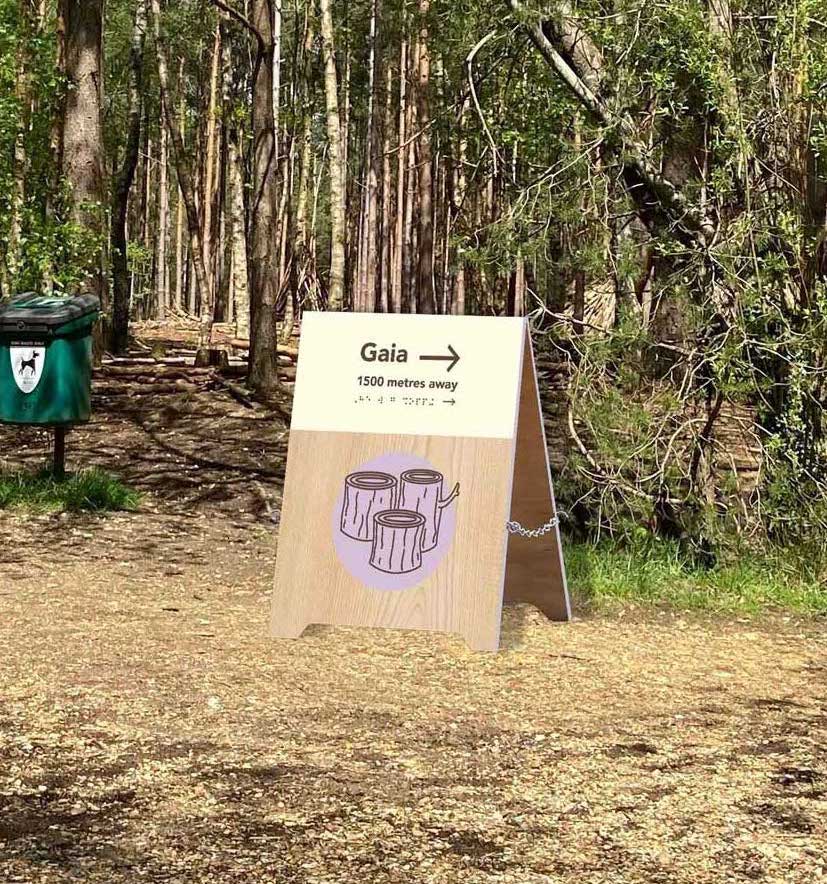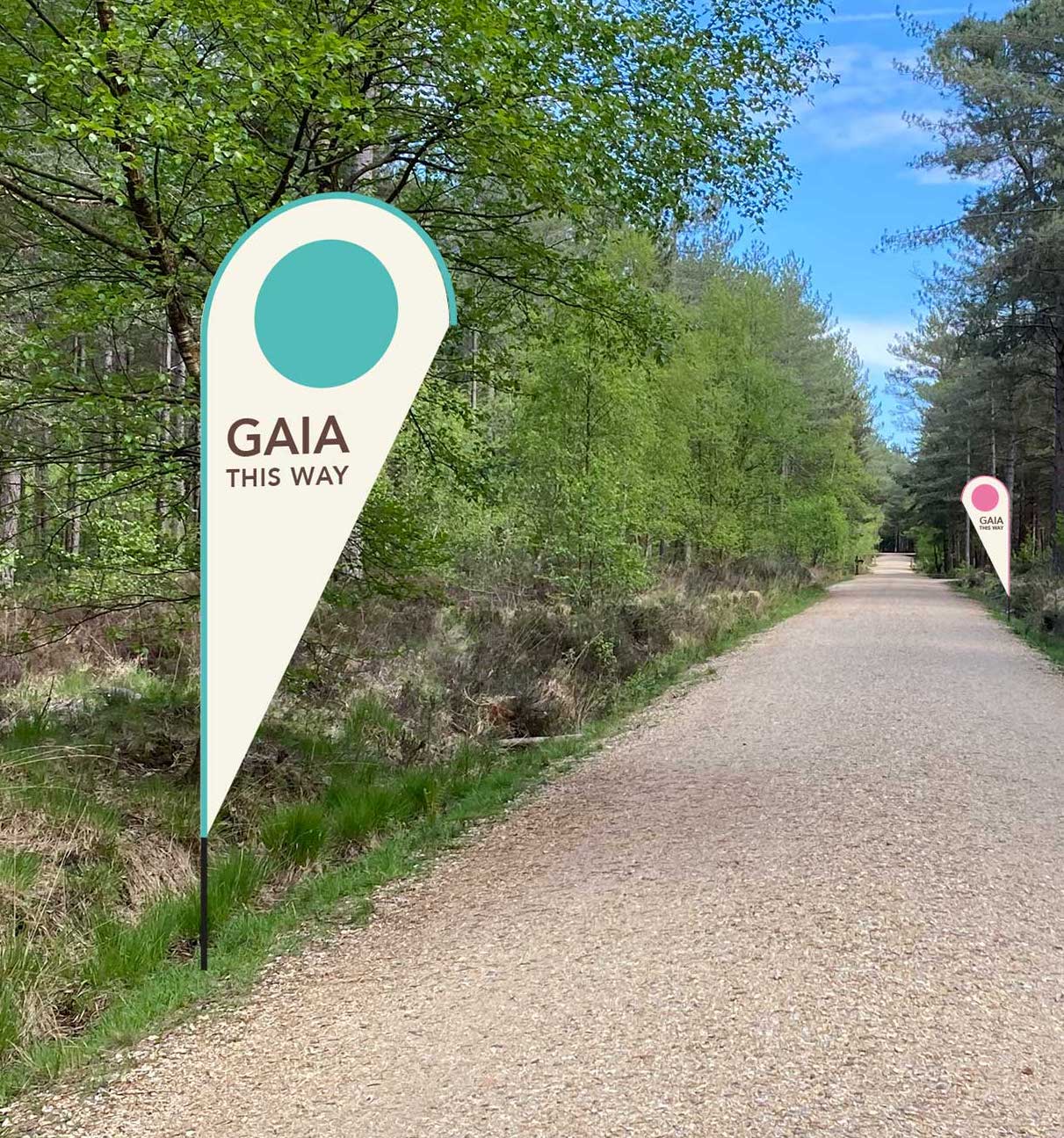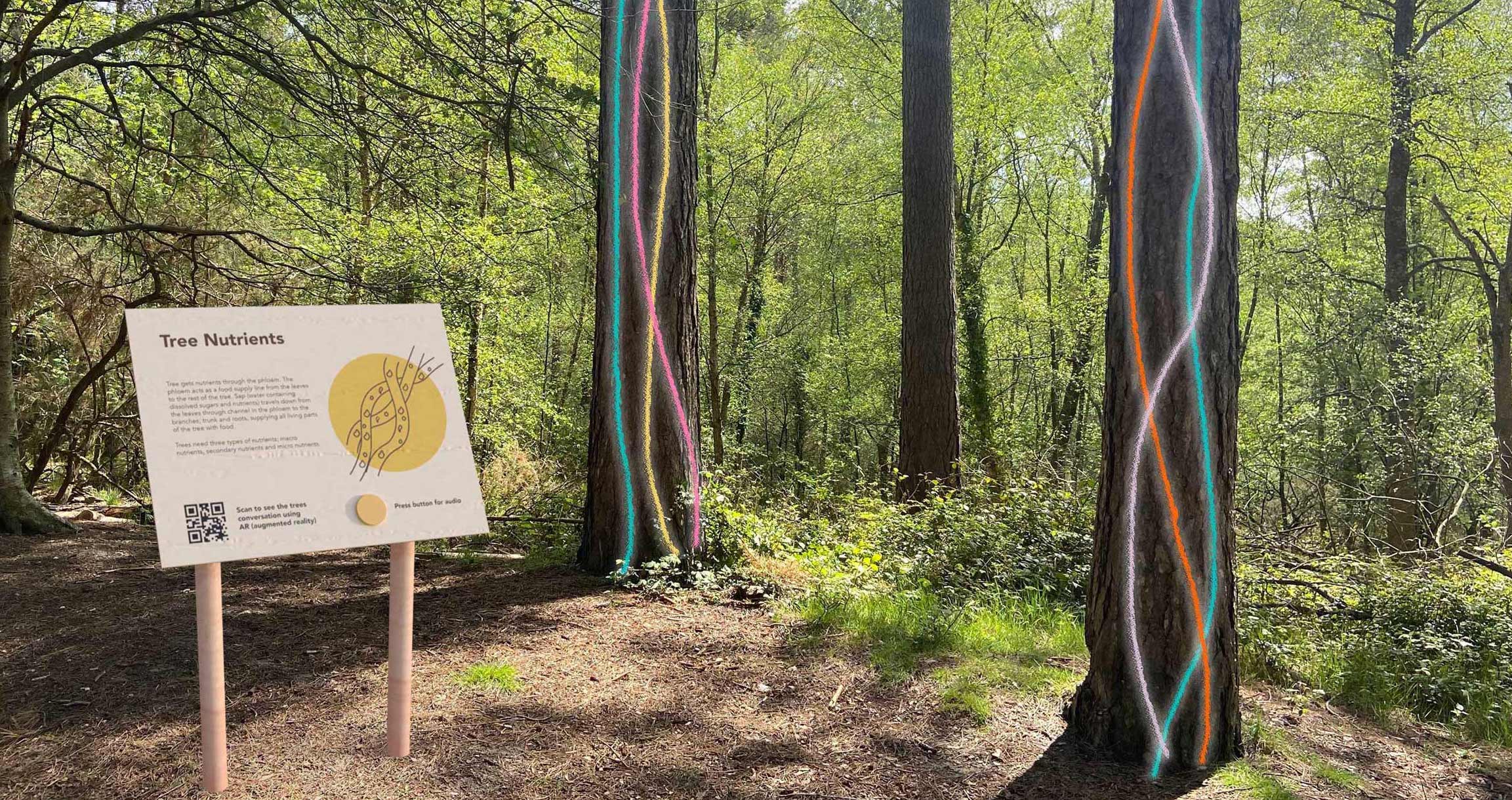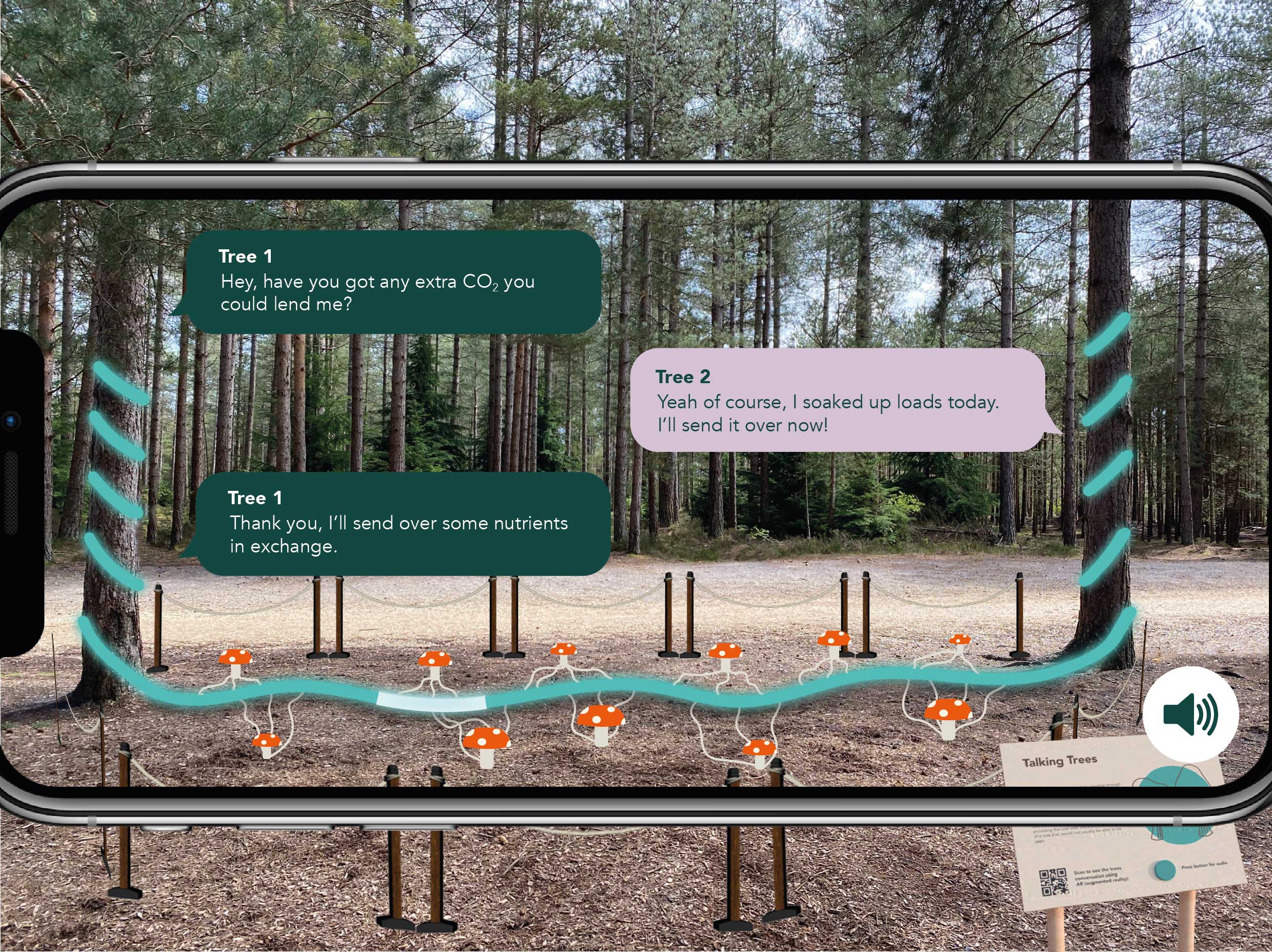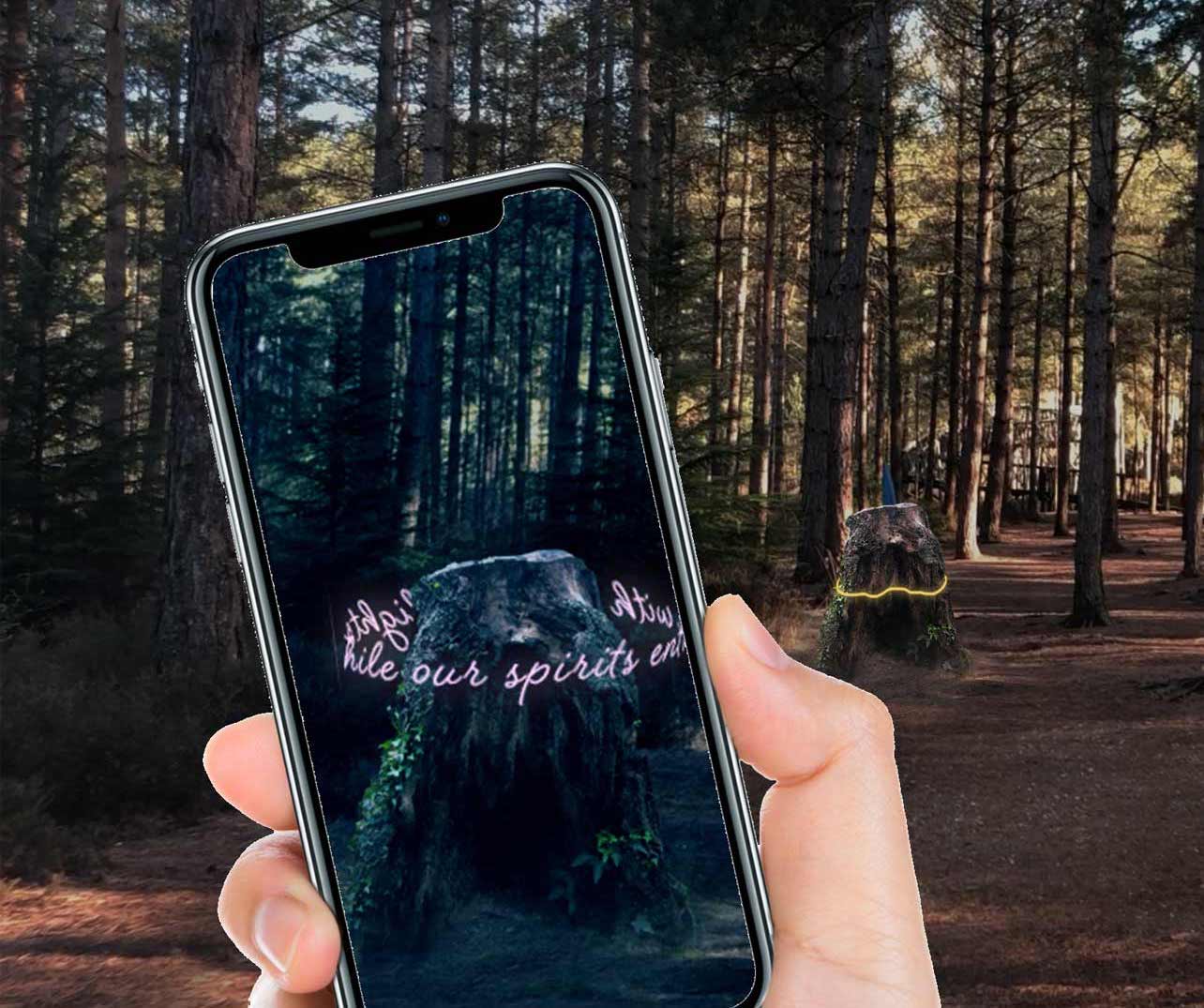
Annotated Environment
An interactive system to tell the unseen stories of the trees.
Collaboration with Grace Reeves, Toby Rivett and Mia Erwig.
← Back to Future Forest
The Challenge
This live brief with Activate challenged us to create a system to enhance the experience of Moors Valley, specifically during September 2021 when the forest displayed Luke Jerram's 'Gaia' installation. The system needed to consist of wayfinding, augmented reality and interactive placemarkers, as well a form of remote access to those who couldn’t visit Gaia in person.
The Journey
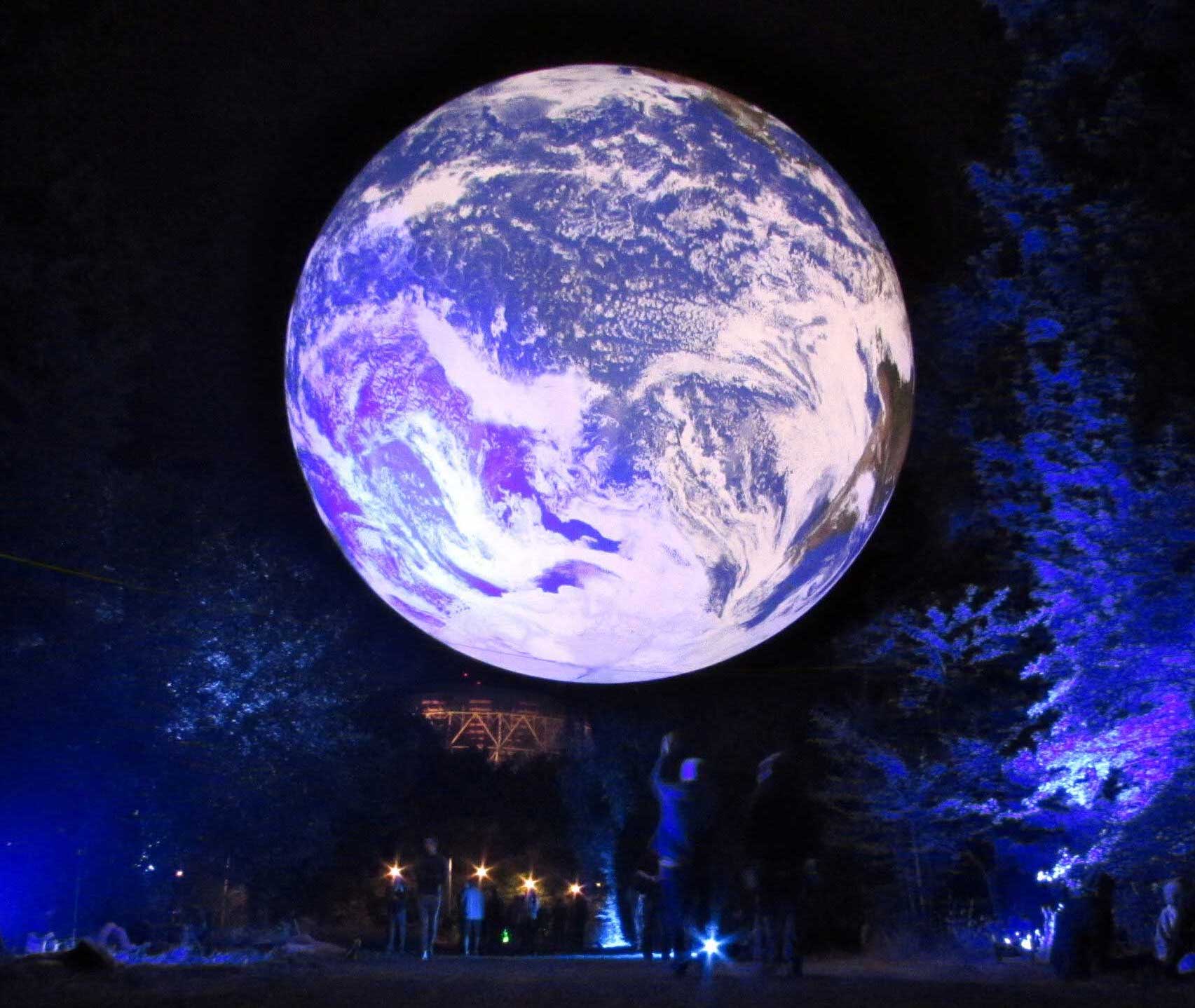

Gaia Installation and Moors Valley
The purpose of the Gaia installation is to offer a new and unique perspective of Earth and to inspire a sense of awe which in turn can stimulate responsibility to take care of our planet. Our role was produce a system to compliment the experience of people visiting Gaia in Moors Valley. On-site analysis gave us an understanding of the accessibility of Moors Valley; we determined that though our wayfinding needed to be appropriate for a natural environment, it needed to be visible enough for people with impairments. We then identified our users as children and parents who already visit Moors Valley as well as young adults between 16 and 22 years old who we aimed to encourage to see Gaia.
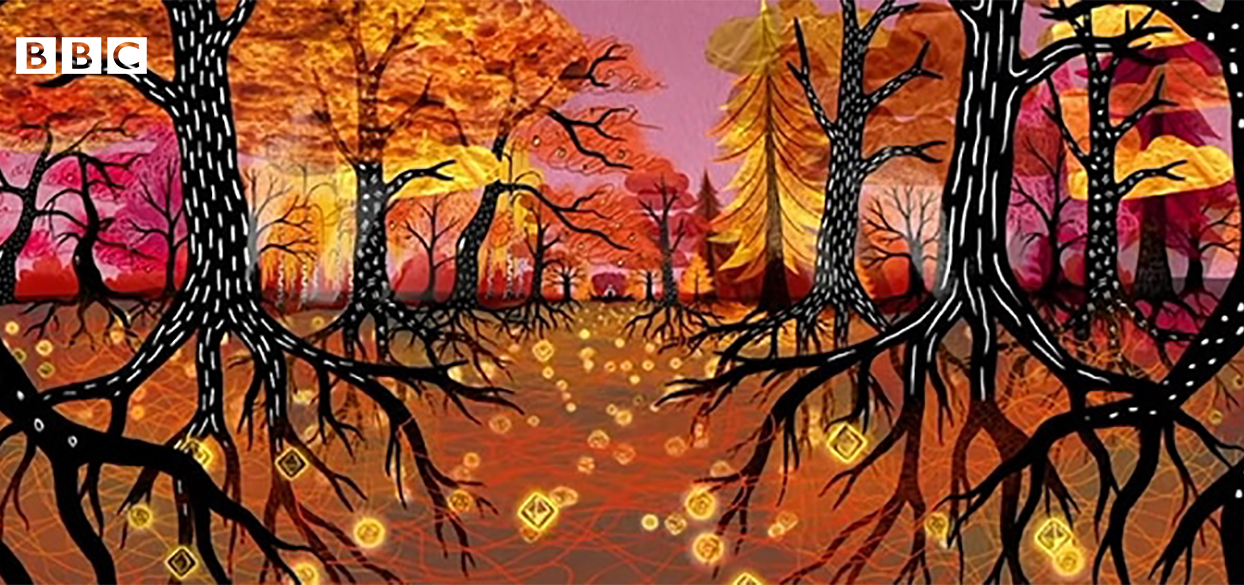

Project Proposition
We decided to refine our proposition to focus on the unseen stories of the trees. This was solidified through in-depth research into the Wood Wide Web, a term used to describe the complex web of roots, fungi, bacteria and the symbiotic relationship between trees. We wanted to explore transforming the visibility and scale of the unseen life associated with trees, using A.R. to bring it all to life.
The aim of our system is to allow our users to connect with nature in a way they may never have done before by making the invisible visible, creating a sense of positive wonder that could inspire them to protect our planet.
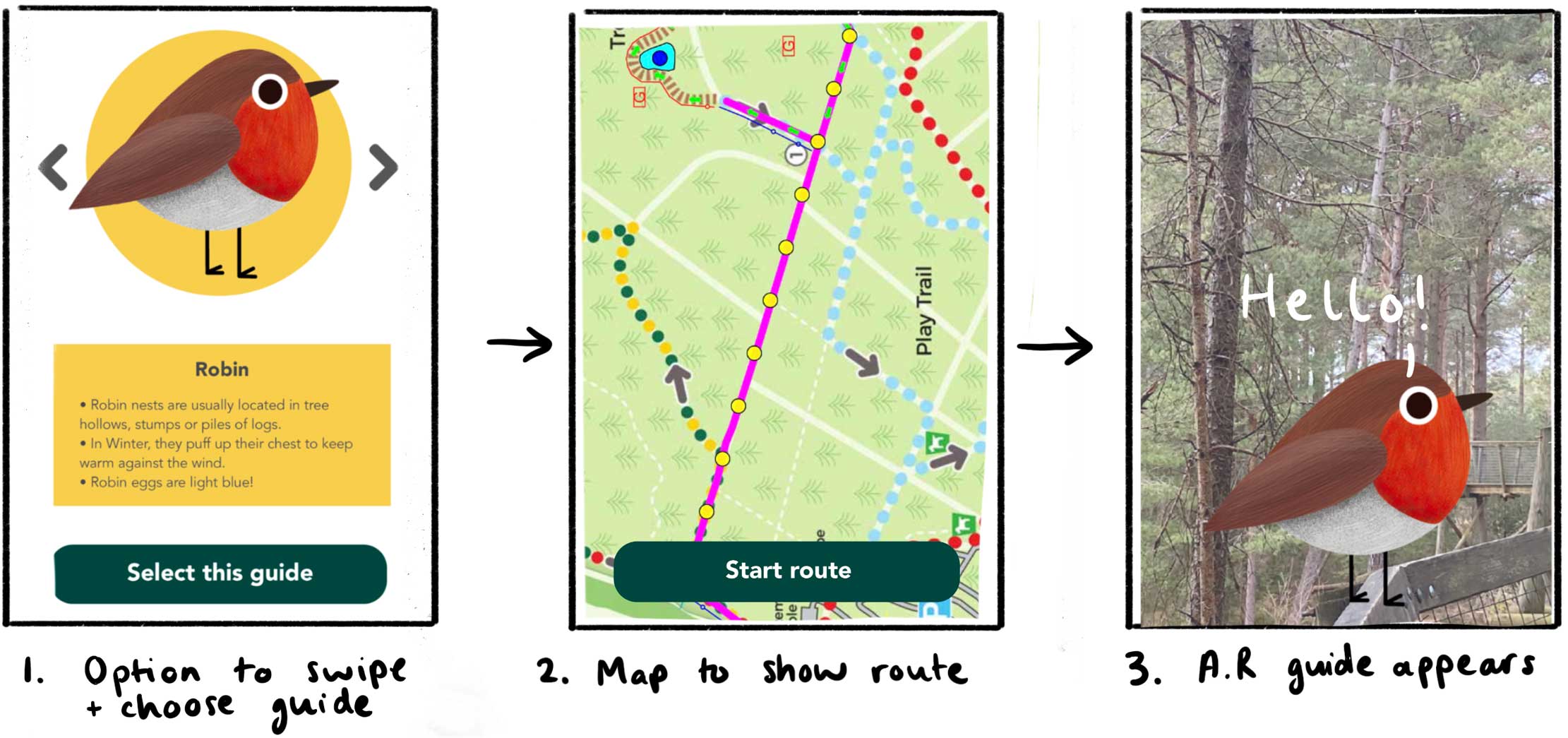
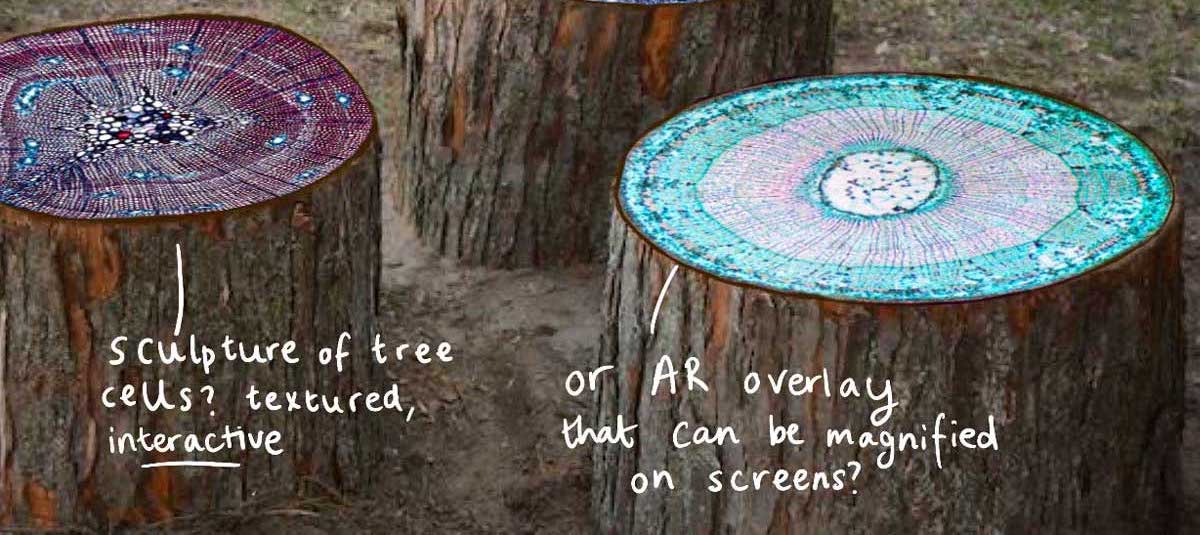
Idea Development
My team and I established that we would create 5 interactive points along the trail leading up to Gaia, each designed for our identified users of families as well as people our age.
We decided that one strand of the system would be an A.R. guide, led by wildlife living amongst trees that we may not see very often. One key observation we made when visiting the site was that parents had to wait whilst their children interacted with the wooden play equipment; we wanted to come up with a solution to keep children engaged with their surroundings whilst walking along the trail to Gaia.
Another concept I came up with that I felt could be pushed further was allowing users to interact with microscopic tree cells; this could engage visitors by allowing them to see something that would usually only be viewed through a microscope.

The Five Interactive Points
In line with our proposition, our system has 5 elements which tell the story of the unseen lives of trees. Each element is colour-coded with an illustrated symbol which also applies to our wayfinding, facilitating easy navigation for the user.
- Follow the Bird is an augmented reality guide which leads the way to Gaia by giving directions and pointing out other interactive points.
- Inside the Tree allows the user to interact with and magnify tree cells, enlarging the scale of something which is usually microscopic.
- Tree Nutrients is augmented reality demonstration of trees taking in nutrients.
- Talking Trees is a visualisation of how and why trees interact with each other.
- The final interactive point before Gaia allows the user to engage with an eco-poem about the wonders of the forest and nature.


Prototypes and User-Testing
One piece of user-testing that we carried out was paper-prototyping which was a quick and effective way to observe how our participant engaged with the design.
We also carried out user-testing of the A.R. bird guide; I created an Adobe Aero prototype which allowed the bird to come to life in the users environment through their device camera. Caden, a 9 year old boy, enjoyed reading about each bird but struggled slightly with some of the words and the amount of text on the page. In response to this, I simplified the language of the descriptions and cut it down to two facts per bird, as well as enlarging the font size to facilitate reading for children.
The Outcomes

